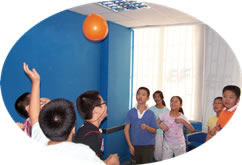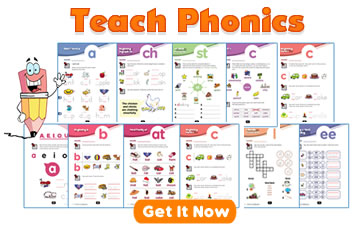-
Fun Games for ESL Kids Classrooms: Talking volleyball - ESL Communicative Game for Kids This is a game idea you can use for teaching. If you want new ideas, here is one. Read the full instructions below.
 English Lessons for Children - For Parents & Teachers of Kids - We offer Video Tutorials, Games, Worksheets, Powerpoint,Flashcards, Placement Tests - Kizschool.com
English Lessons for Children - For Parents & Teachers of Kids - We offer Video Tutorials, Games, Worksheets, Powerpoint,Flashcards, Placement Tests - Kizschool.com Kids Math Exercises : Math Practice for Kids - Pre-K to 8th Grade.
Kids Math Exercises : Math Practice for Kids - Pre-K to 8th Grade.- ESL Ebook Packs for Kids : Resources You can't afford not to have.
- Math4Children.com: Free Math Worksheets, Math Games, Online Quizzes, Video Lessons and eBooks preschool,1st to 6th grade.
How to Play the ESL Talking Volleyball Game
-
Skills to practice: Speaking and vocabulary practicing.
Levels: All levels of kids except toddlers
Requirements: skip rope, whistle, and one balloon or more just in case.
General Rules: Every time a student touches the ball, s/he must say a word or sentence.
Class size: 10 – 20 studentsHow to play:


How to play: Pick out three students, bring them to the front of the class and make them team captains. Tell the students they are going to play a volleyball game. The captains will take turns choosing students to join their teams until everyone is chosen.
Ask the students to choose their sides of the coin. Toss a coin to decide which two teams start first. The team that looses during the coin tossing has to sit at the side of the playground.
Define a playground and use a skip rope to divide the playground into two equal parts. Get a medium-sized balloon and blow it to almost full capacity. Tell the two teams to take their positions.
Tell them the rules- The teacher is the referee.
Rule 1- Every time a student hits the ball s/he must say a word or sentence under a chosen category. For example the teacher can say “when you touch the ball say a word related to animals” or make a sentence using the verb “like” or ask a question using the word “want”, -almost anything you want to practice.
Rule 2- Students can only hit the ball once every time.Rule 3: First strikes of the ball must be upwards or across. This is especially useful when starting or restarting the game.
Rule 4- Loosing points. When a team looses a point the teacher blows his whistle, takes the ball and restarts the game.
(The ball cannot touch the ground. If the ball touches the ground a team looses a point. If a student hits the ball without saying a word, the team looses a point. If the ball does go over the skip rope after three attempts, the team looses a point. If a team looses a total of three points, the next team takes their place.).Tips: This game can be played in or out of class. This is a great stirrer for most kids’ classes, but note that there are other variables you must consider depending on the students. Also, to avoid one student dominating the game, make a rule such that each student hits the ball and goes to the back. In some cases I (the teacher & referee) would hit the ball to the direction of the student who is not participating actively.
Caution: This game is exciting as it can be dangerous. I always ask my students with glasses to take them off. To avoid students missing the ball and hitting others' faces, make a rule such that hands don't go over the skip rope.
- The teacher might decide to play on the weak side to make it more fun.
- Some students might me physically weak to play- As a teacher I often took out the weak students and put them in the teacher’s team.
- Create more rules as time goes on, to save the fun.
- Watch out for students who wear glasses. I often advise my students to take off their glasses if they can.
- You might have many broken noses in the end if you don’t make a tough rule of no hands touching or crossing the skip rope i.e students must strike the ball from their own half of the defined playground.
-
MORE ESL GAMES FOR KIDS HERE>>>
 ESL Fun Interactive Games Teaching & Learning
ESL Fun Interactive Games Teaching & Learning - Grammar Games - Jeopardy, Hangman, Wheel Games, Snakes and Ladders and more>>>
- Vocabulary Games - memory games, maze games, Snakes and Ladders, Hangman and more>>>
- ESL Online Games Directory - Have Fun Teaching and Learning English with your Students
 Free Printable ESL Board and Card Games
Free Printable ESL Board and Card Games- Printable Board Games For ESL Classrooms
- Printable Card Games for the ESL Classrooms
- Make your own games with templates
 Free Powerpoint Games For ESL Teaching
Free Powerpoint Games For ESL Teaching - ESL Powerpoint Jeopardy Games
- ESL Powerpoint Olympic Jeopardy Games
- ESL Powerpoint Taboo Games
- Make your own Powerpoint Games from our templates
 Free MS WORD & PowerPoint Game Templates - Make your own games
Free MS WORD & PowerPoint Game Templates - Make your own gamesESL Communicative Games for Classroom Learning
MORE LESSONS
Kindergarten, Grade1, Grade 2, Grade 3, Grade 4, Grade 5, Grade 6
- Math4Children.com: Free Math Worksheets, Math Games, Online Quizzes, Video Lessons and eBooks Downloads for Learning and Teaching kindergarten, preschool,1st to 6th grade.
Video Lessons by Unit & Level
Level 1 Course Video Tutorials
Unit intro – Alphabet & Phonics Resources.
Unit 5 A – Colours – What colour is it?
Unit 5 C - Green Monster Colours Lesson
Unit 6 – Fruits – I like apples.
Unit 7 – Body – I have a head.
Unit 8– Actions – I can, I can’t.
Level 2 Course Video Tutorials
Unit 1 – Animals – Farms Animals.
Unit 4 – Actions – Can and Can’t
Unit 6 – Demonstrative Pronouns – This/That/These/Those
Unit 9 – Days of the week and weekly activities
Unit 10 - Weather – What’s the weather like?
Unit 11 - Food – What do you want to eat
Level 3 Course Video Tutorials
Unit 1 – Pets : Why do you like dogs?
Unit 2a – Time – What time is it?
Unit 2b – Time – What time is it?
Unit 3 – Months & birthdays – When is your birthday?
Unit 4 – Jobs – What people do.
Unit 5 – Actions – What are you doing?
Unit 6 – Transport – How do you come to school?
Unit 7 – Clothes – What are you wearing today?
Unit 8 – Where is it? – At home
Unit 9a – Vegetables – How much are the carrots?
Unit 9b – Vegetables – Extra Vegetable Vocabulary lesson - Cauliflower, broccoli etc.
Unit 10 – Weather and clothes - Put on your sunglasses.
Unit 11 - Zoo – What does a panda look like?
Recommended Extra Resources
ESLTOWER.COM : Many Free English Grammar & Vocabulary Exercises for Teachers and Students
Want More Materials? Check Out ESL Galaxy for All ESL Lesson Plan needs
- ESL Lesson Plan Center : ESL Lesson Plan guide for all TEFL lesson plan needs on the ESL Galaxy.
- Board Games : Teach English grammar, vocabulary and sentence structures using communicative board games
- Grammar Worksheets: teach most common English grammar themes using these printable worksheets
- Vocabulary Worksheets : Well-planned theme-based vocabulary worksheets
- Theme-based Lesson plans: Plan your lessons around a theme by using the worksheets here.
- Pronunciation Lessons: Phonetic worksheets, mp3 downloads and vowel sounds audio book
- Crossword puzzles: A generous offer of free crossword puzzles for grammar and vocabulary practice
- Word Search Puzzles: Find word search puzzles that do more that fills time effectively- Good settlers
- Festivals and Holidays worksheets : Lesson plans based on holidays and festivals-Halloween, Christmas etc.
- Travel English: Teach survival English for students going abroad using these lesson plan materials
- Writing Worksheets and Templates: Practice writing using these cool printables
- Word Formation worksheets: help students improve vocabulary by teaching them prefixes, suffixes and other word formation skills
- Song Worksheets: Learn and teach English with English songs
- Movie Worksheets : Watch movies and learn English using these English film worksheets
- Math4Children.com: Free Math Worksheets, Games, Quizzes, Videos and eBooks for Learning and Teaching Math.
- Kiz School - This site offers English Courses for kids from Preschool, Kindergarten to 6th Grade. You don't have to be a professional teacher to teach kids.
- ESL Kids Lab This site is an extension of English 4 Kids
- ESL Galaxy : Printable worksheets, board games, word search, matching exercises, crosswords, music worksheets, video worksheets and more free stuff for all levels.
- English Media Lab: This free online classroom has a huge database of videos, esl quizzes, grammar exercises, activities for all levels, beginners, elementary, pre-intermediate, intermediate, advanced levels.
- ESL Downloads: Download ESL lesson plan materials and interactive exercises for students
- ESL Games World : ESL Fun Games for Teachers and Students





